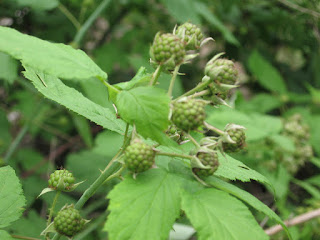It turns out that gardening is not a competitive sport, like how I've been treating it. The only competition seems to be internal, inside the gardener: how much they are willing to let nature be nature. Some gardeners, for instance, remove all foreign and domestic life that was not purposefully planted there for the sole immediate gratification of the gardener. I like to think that I am at least some-what more laissez-faire about the whole process. Our little piece of land attempts to work with nature and not against it. The majority of what we do is set up the structure for nature to do the work. Beans want to grow here? Let's give them something to climb on. Corn seedlings are getting choked out by knotweed? Get em out of here!
There is competition, to be sure. The weeds want the sunlight and the water; the creatures want the supple seed leaves just poking out of the ground. But, I want to consume most of the garden for my own personal gain, too. I can't blame them for wanting to eat what I want to eat. It's delicious. If I wait long enough, someone or something will come and claim the creature or plant that I consider a nuisance. Nothing lives forever.
Our garden has so many amazing predatory insects- and I don't even know about half of them. We started having these shiny green beetles that eat our nuisance insects. I am grateful for them being around. Instead of spraying chemicals on our nuisance bugs, we just wait- and something comes along. Nothing lives forever.
Our strawberries are really kicking it off this year. We have a few varieties, and this is the season for them to go crazy, and they are happy to oblige the calendar. I am grateful to be able to pluck a juicy red thing off a little shrub and have the squish of the fruit and the crunch of the seeds to remind me how lucky I am to have teeth and taste buds. A rabbit must have thought this too, because she decided to have her litter in the strawberry patch. I've decided to take that as a compliment. Thank you, rabbit. However, that meant no strawberries, or anything else in the general vicinity, either. She even sampled the seed leaves off of my cotton, but after two or three decided that cotton-tailed rabbits don't need to be made of cotton and moved onto the bean plants.
We really are lucky. Cottontail rabbits (both Eastern and New England varieties) are losing habitat very quickly, as we let forests mature and manicure our lawns, but don't allow the in-between habitat thrive. (Read more about Cottontails in CT
here). The property we live on has great cottontail habitat, and they let us know it. The kits in our strawberry patch were already the second or third litter this year. We basically have to trip over rabbits on our way to the garden everyday. There are enough for disease, hawks, humans and coyotes to get without seriously injuring the population.
Most wild animals don't make it out of infancy (especially animals that have large litters), and the strawberry patch litter were no exception. A torrential downpour happened overnight and they didn't make it. I had a moment of sadness while Will took their little bodies away. The next day I had a great explosion of strawberries to pick, and Will & I spent the evening chasing adolescent rabbits out of the admiral pea bed. The next litter was already nesting under Rooster's porch.












